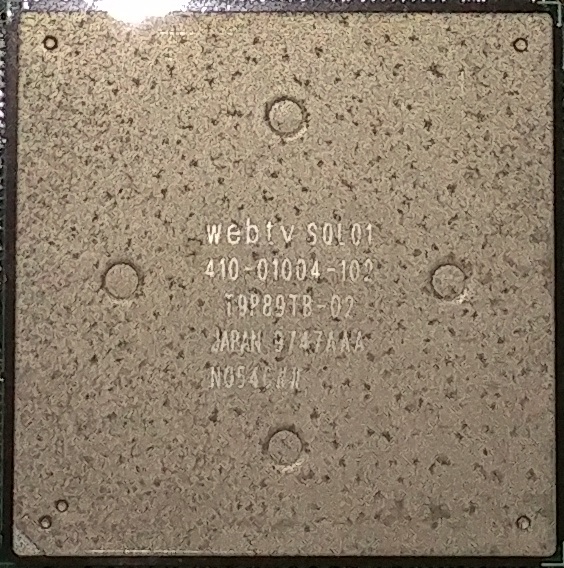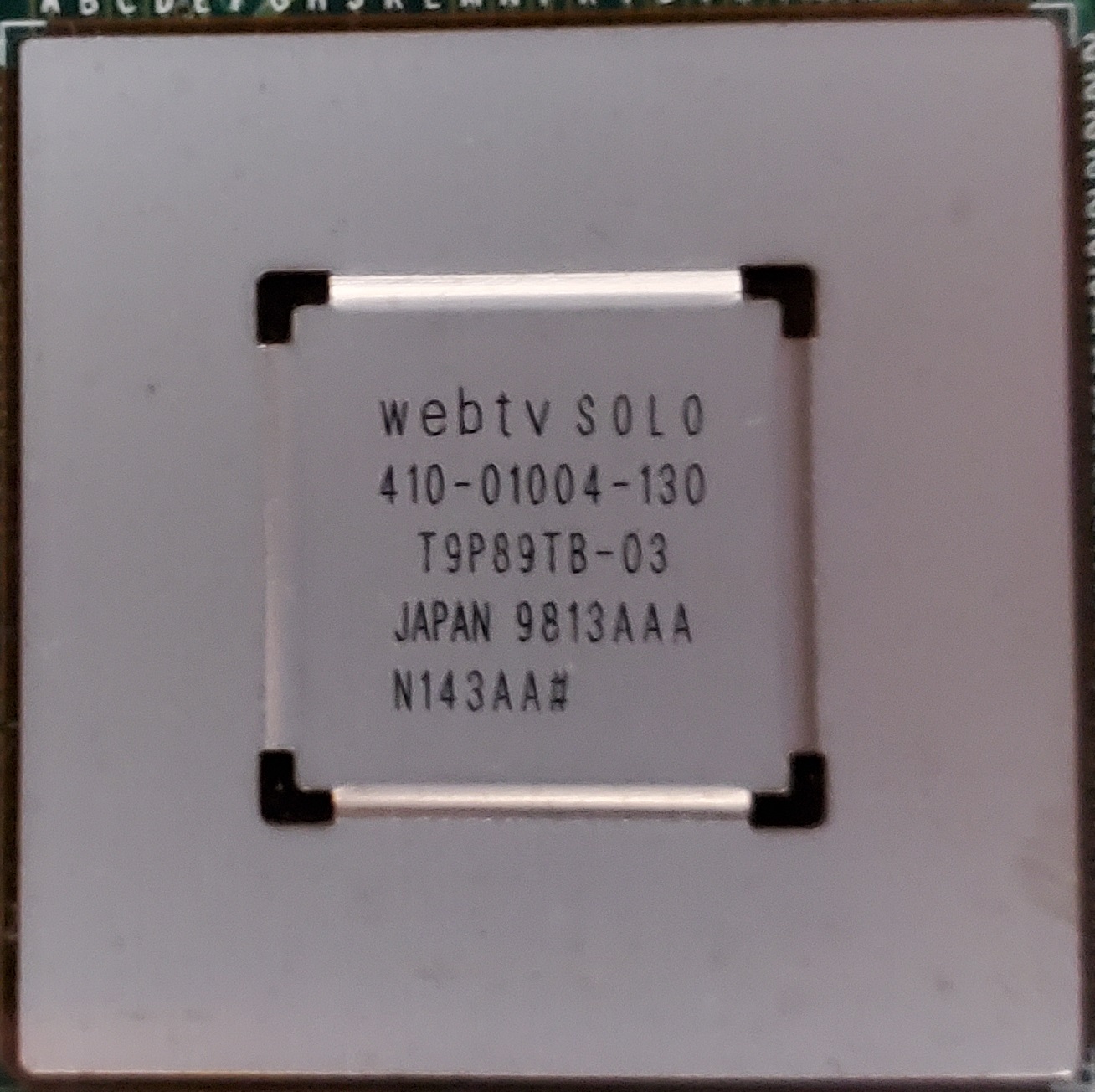Solo
Solo is a custom-made enhancement ASIC introduced with the release of WebTV Plus units in 1997. It was announced by WebTV Networks and the press to offer 3D capabilities, image enhancement, picture-in-picture, and compositing of multiple video feeds. [1] The chip was named after a German shepard WebTV founder Steve Perlman owned. Not much else is known about it or how it works at the moment.
Capabilities
Capabilities of the WebTV Solo chip include:
- On-the-fly decompression, 3-D transformation, and compositing of compressed images and multiple simultaneous live video feeds with anti-aliasing and translucency
- Enhanced graphics mode to "generate extremely complex screens" - What this exactly means isn't clear yet
- "10:1 on-the-fly" image decompression engine
- Anti-aliasing for smooth text and graphics
- Translucency capabilities for graphic overlays (full 8-bit alpha channel)
- On-chip flicker elimination for NTSC or PAL interlaced displays.
- Integrated I/O including: SmartCard, infrared, parallel port, and system memory interfaces
(Source: https://www.japaninc.com/cpj/extras/aug99ex04.html)
Versions





There are three known versions of the Solo chip:
- "SOLO1". Currently known to be used in the Japanese Sony INT-WJ200 WebTV box and in older American WebTV Plus boxes (i.e., manufactured before May or June 1998) as well. Chip design has 4 concave dots that form a diamond shape.
- "SOLO2", which was designed for use on UltimateTV boxes.
- "SOLO3". Used in American WebTV Plus boxes (at least the original LC2 and Derby). No differences are known between this revision and "SOLO1" aside from the chip design using a raised bump instead of 4 concave dots.
SOLO2
In 1999, plans were made by Microsoft to design a successor to the Solo chip that would be used on hardware developed for the DVR-focused iteration of WebTV, UltimateTV. New features introduced with this version of Solo are primarily focused on introducing DVR capabilities, including being able to process several video streams at once, allowing users to record several shows at the same time, and adding a DAC to display digital video content directly on a television. Toshiba would be responsible for manufacturing the Solo2 chips.
No other information about the Solo2 chip and its improvements compared to the original Solo have surfaced as of yet.
Documentation
As of July 7, 2023, thanks to TommyD, we now have a complete copy of the original documentation for the Solo ASIC. For now, this is only being hosted directly on the wiki's servers. It is available here, but do note that the PDF is very large (423 pages) and can take a while to download.